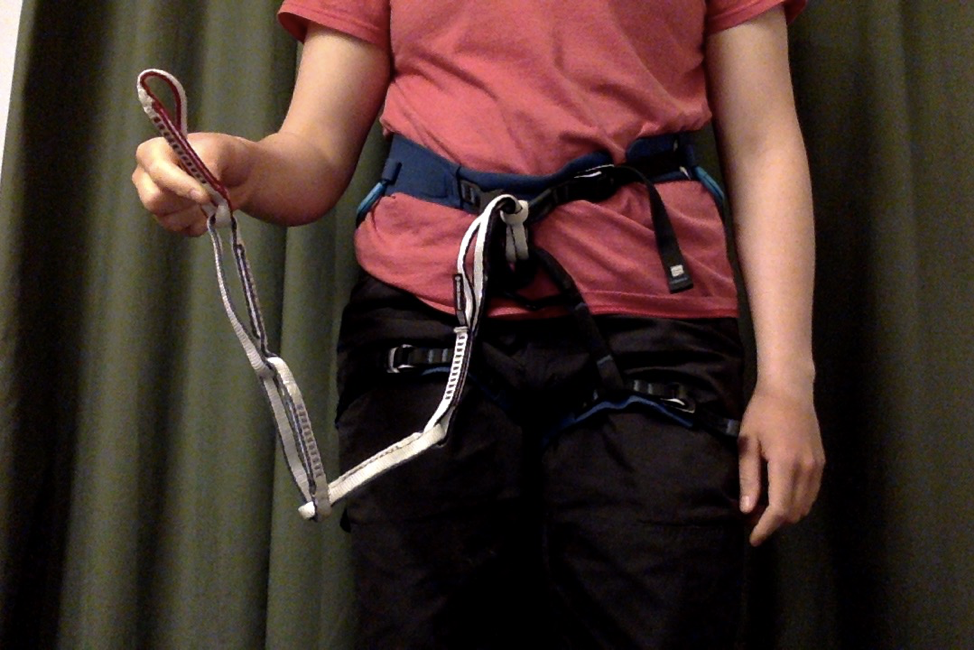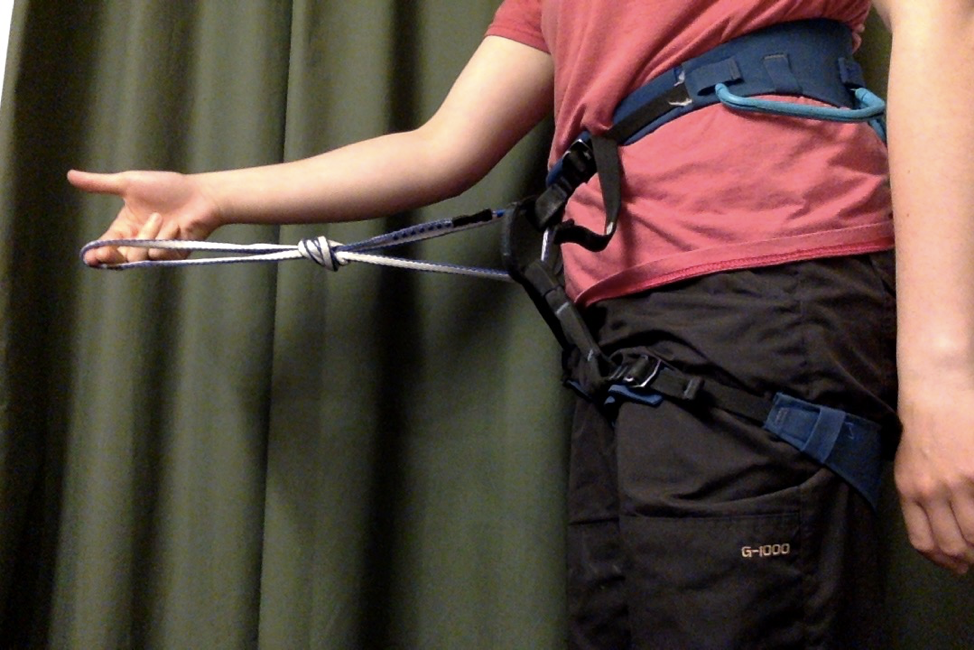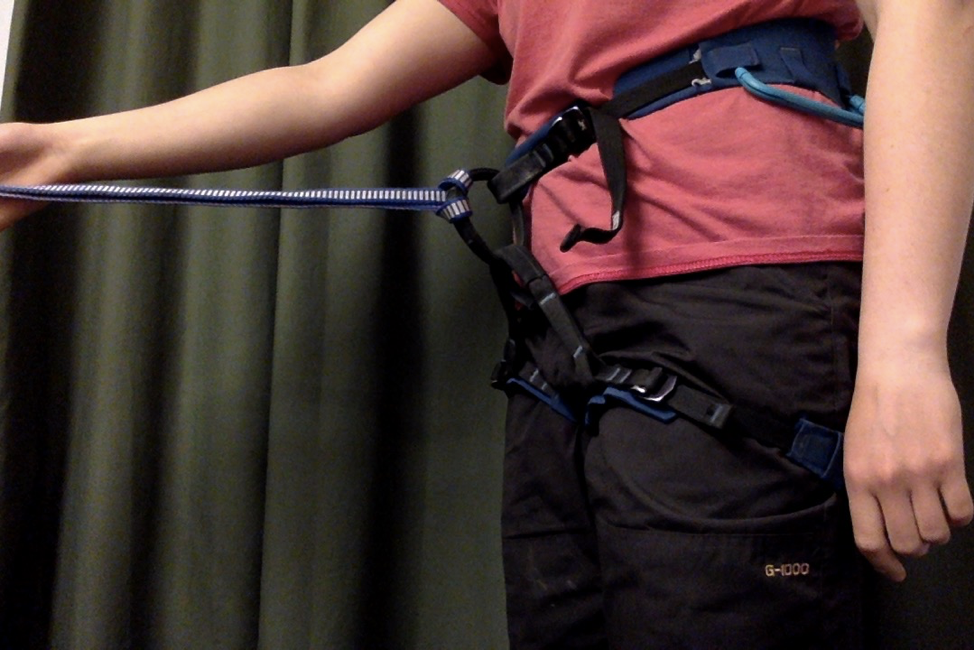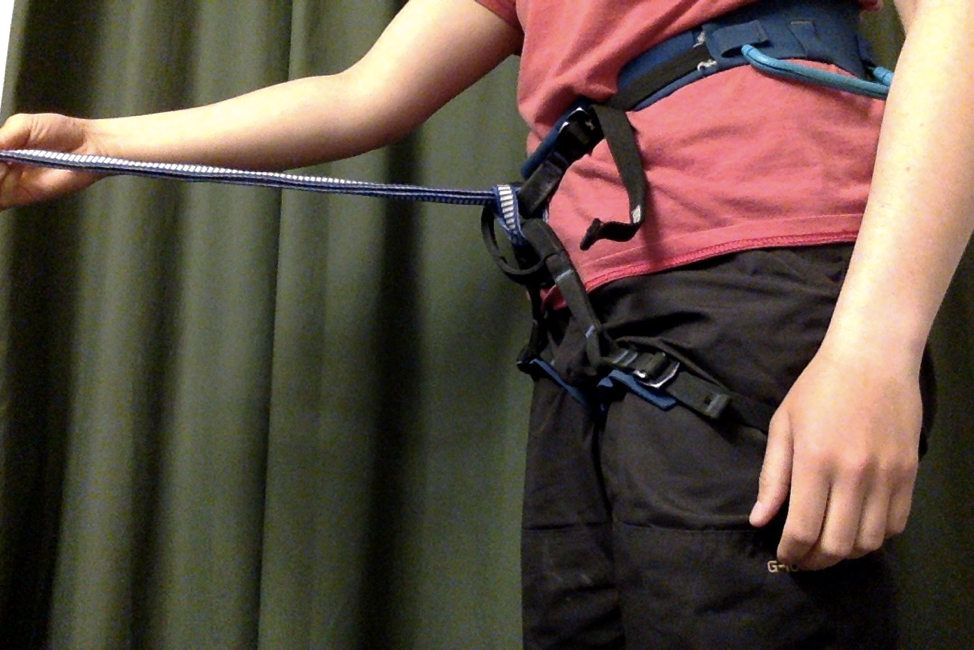Climbers are notoriously stubborn when it comes to gear and best practices. Whether it’s a heated discussion about the best cams on the market or a debate over the best orientation for an ice screw placement, there are so many people and opinions trying to convince you that they’re right.
While it’s good to continuously re-evaluate our climbing practices, it can be difficult to determine which sources of information are worth listening to, and which are best avoided. In climbing, listening to a poor source of information can have disastrous consequences, so this is not something to be taken lightly.
Our recommendation? Girth hitch slings, daisy chains, and PAS systems to your tie-in points, not your belay loop. The common rule of thumb - belay loops for metals (e.g. carabiners) and tie-in points for fabrics (e.g. ropes, slings) - still holds true here.
One big, and important, debate in the climbing world revolves around the use of slings, daisy chains, and PAS systems to connect a climber to an anchor or piece of gear. Although we will focus on using slings as attachment points in this article, it is worth taking a moment to briefly explore the differences between the three systems.
Sling, daisy chain, or PAS?
Next time you’re at the crag, take a look around. How are people attaching themselves to anchors? Chances are, in addition to using a rope, they’re using a handful of different methods - either a sling, daisy chain, or PAS.
Slings are the simple, quick and dirty method of attaching oneself to the anchor. They’re a multi-purpose, lightweight piece of kit that you’re likely to be carrying anyway so they make handy attachment systems. They come in an assortment of lengths and can be attached to the harness in a variety of ways - a point we’ll discuss in detail in this article.
you should never be using a daisy chain to anchor yourself to a belay
Daisy chains are, at first glance, a useful attachment system, as they have a number of loops which can be used to make a sling of various lengths in just a second. However, they were never designed to be used as anchoring systems and their incorrect use has been the cause of a number of climbing accidents over the years.
Their use as an anchoring system warrants an entire article unto itself, but here’s the short answer: based on manufacturer’s recommendations you should never be using a daisy chain to anchor yourself to a belay.
The PAS, on the other hand, is specially designed for anchoring to a belay. Built as a chain of strong, durable, and reinforced loops which allow you to attach yourself in a number of ways to an anchor, a PAS is a great piece of kit. However, they can be pricey and they’re heavier and not nearly as versatile as a sling.
Although there are certainly pros and cons to using any of these three systems, here, we’ll focus on using slings as a connection point between a climber and an anchor, paying particular attention to how we attach a sling to a harness.
When you attach a sling to a harness, you have two potential options: the belay loop and the tie-in points.
To some climbers, this may seem like an innocuous decision, however, there are some important aspects of harness-sling attachment that one should consider before racking up for their next climb.
Which knot to use
First and foremost, one needs to decide how they will attach the sling to their harness. There are a number of options here, each with its own advantages and disadvantages.
Most climbers tend to gravitate toward the girth hitch because it is simple and quick to tie. Let’s take a quick look at the girth hitch and another option for sling attachment - the basket wrap.
The girth hitch
The girth hitch is often preferred when using shorter slings as it does not drastically reduce sling length, thus allowing the climber more flexibility when anchoring.
It is also quick and simple to tie and easy to identify as incorrectly tied, which is an important risk management consideration when working with novice climbers.
That being said, there are two main disadvantages to the girth hitch:
First, the girth hitch can reduce sling strength up to 50%. Since most slings have strength ratings of 22kN, this isn’t a terribly big deal during normal use, but if you were to shock load the sling, this strength reduction could have disastrous consequences.
Second, the girth hitch tends to cinch the sling down and apply pressure directly to one particular area of whatever it is attached to. Keep this characteristic of the girth hitch in mind as it is important when we consider where we attach slings on our harness.
The basket wrap
Another good way to attach a sling to one’s harness is to use a basket wrap. To basket-wrap your sling to your harness, follow these steps:
- Feed one end of the sling through your tie-in points.
- With both ends of the sling in one hand, tie an overhand knot in the middle of the sling.
- Voila! You should have a basket-wrapped sling with two loops at the end and a knot in the middle of the sling.
The basket-wrap method is less frequently seen in the recreational guiding world but can be a valuable tool in a number of situations.
If you plan to use a Dyneema or spectra sling, the basket wrap is useful as it adds redundancy to a nearly completely static sling. Plus, Dyneema slings tend to be much thinner than their nylon counterparts, so this redundancy increases the surface area that would need to be cut to cause a complete system failure.
However, the basket wrap has one major disadvantage - it reduces the usable length of the sling by more than half.
If you’re using a triple or quadruple length sling, this may actually be an advantage, as it gets the sling down to a more reasonable size. But, if you’re using a double or single length sling, the basket-wrap will be unfeasible.
Since the basket wrap is the less frequently used, and the less contentious, of the two options, we’ll now focus exclusively on the girth hitch. Specifically, we’ll now look at where one attaches a girth-hitched sling to one’s harness - the belay loop or the tie-in points.
How to attach a girth-hitched sling
As mentioned previously, a sling can be attached to a harness using a girth hitch in one of two places: the belay loop or the tie-in points. Now that we understand the advantages and disadvantages of the girth hitch itself, we now have to ask ourselves: which is better, the belay loop or the tie-in points?
To answer that question, we have to consider the pros and cons of the two methods. Let’s look at girth hitching to your belay loop first.
The belay loop
Many people prefer to girth hitch their slings to their belay loop because it is quick, easy to see, and doesn’t take up space in the tie-in points, which can be important when needing to tie into multiple ropes at the same time.
However, girth hitching a sling to the belay loop means you’re cinching a sling down on one area of the belay loop. This reduces the ability of the sling to rotate freely and can cause extra wear and tear on the belay loop where it contacts the leg loops.
This issue was implicated in the death of Todd Skinner on the Leaning Tower in Yosemite in 2006. Todd had girth-hitched his ascender daisy chains directly to his belay loop, preventing the loop from rotating and causing it to rub continuously on his belay loops. After many thousands of feet of ascending, his leg loops eventually sawed their way through his belay loop, causing a tragic accident.
The tie-in points
Girth hitching a sling to your tie-in points, however, reduces the risk of this excessive wear and tear, which can be incredibly difficult to spot. If that wasn’t good enough, consider that tie-in points are reinforced and designed to be abrasion resistant, while belay loops aren’t.
Plus, in addition to reducing the risk of excessive wear and tear, slings, PAS systems, and daisy chains girth hitched to one’s tie-in points have been shown to be slightly stronger than those attached to the belay loop.
Black Diamond’s Quality Control Lab tested the tensile strength of their Link PAS system when girth hitched to the tie-in points and got a result of 27.7kN while a PAS attached to the belay loop held only 21.9kN. While 21.9kN is still a whole lot of force, this is a noticeable decrease in strength that is worth being aware of.
The Verdict
Girth hitch slings, daisy chains, and PAS systems to your tie-in points, not your belay loop. The common rule of thumb - belay loops for metals (e.g. carabiners) and tie-in points for fabrics (e.g. ropes, slings) - still holds true here.
Although it might seem convenient and easy to simply girth hitch a sling to your belay loop, it’s best to keep that loop free and clear for its main use…belaying.
Girth-hitching a sling to your tie-in points is recommended by most gear manufacturers, but be sure to always check the manufacturer’s specific recommendations for your kit before racking up.
Happy climbing!




